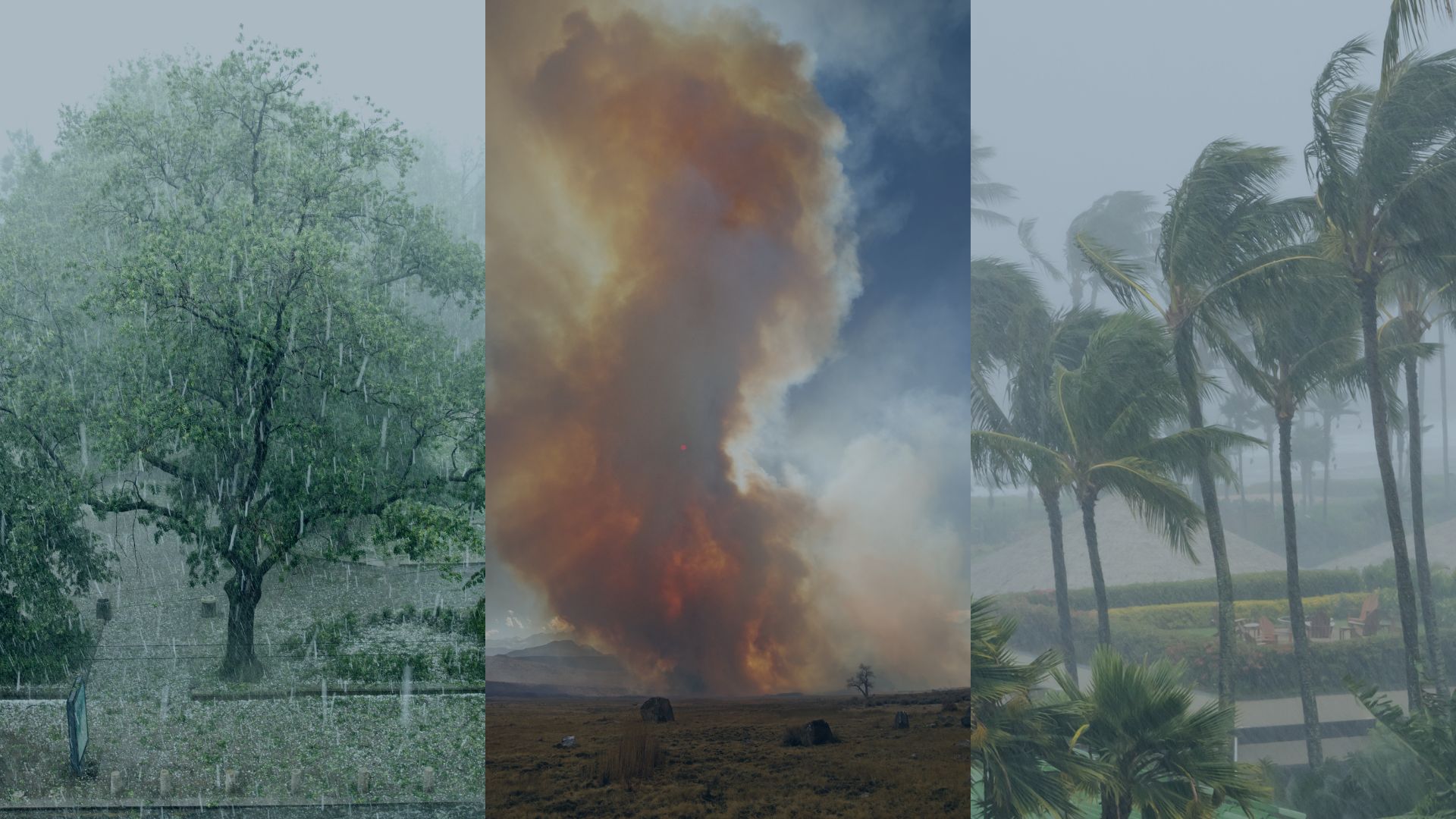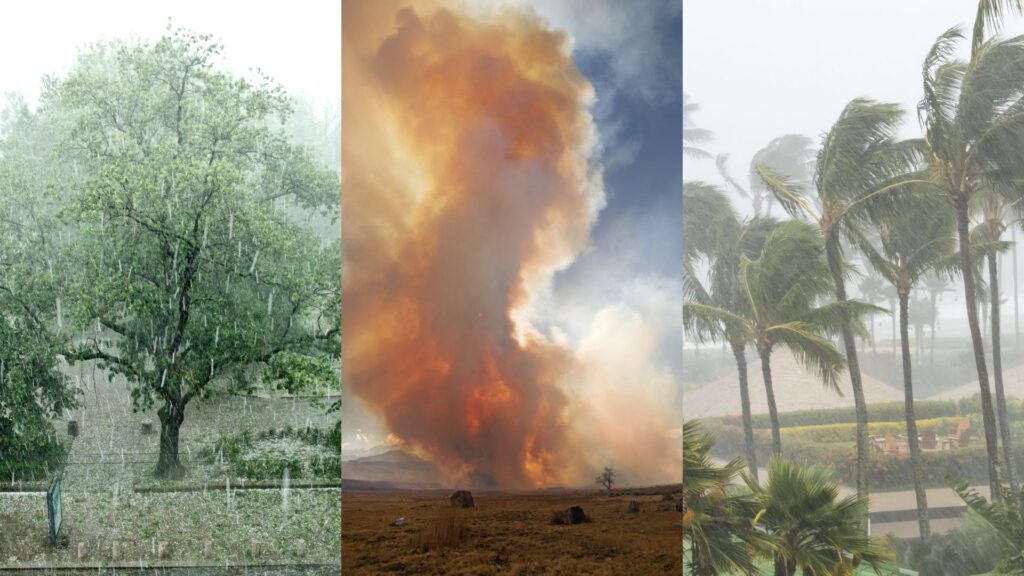
The Impact of Extreme Weather on Property Insurance: A Midyear Review
For a snapshot view of the landscape for commercial and personal lines property insurers amid the rising frequency and ferocity of extreme weather events this year, just look at Texas.
During the first six months of 2024, the Lone Star State was walloped by the worst wildfire in its history; storms that smashed windows out of skyscrapers and dropped hailstones the size of softballs; and coastal flooding caused by Tropical Storm Alberto. And that was all before Hurricane Beryl left a trail of destruction in early July.
It’s also indicative of a growing number of “compound events” seen in recent years in which weather patterns converge with back-to-back, or even overlapping, extremes. Whether it’s devastating hurricanes or record-breaking wildfires, or both at the same time, the phenomena are more than just costly, life-threatening events. They’re also economic emergencies that make it imperative for property insurers to leverage advanced analytics and next-gen data ecosystems to understand and price risk accurately so they can provide reliable coverage for as many homes and businesses as possible.
The Escalating Cost of Climate Change
Despite its moniker, the Lone Star State is hardly alone. Florida, California, the Mountain West, and the Great Plains are all seeing rising volumes of catastrophic (CAT) weather events. During the first half of 2024, global economic losses from CATs topped $128 billion. More than $61 billion of those losses were insured. That’s 25% higher than the 10-year average.
Capgemini estimates the economic losses stemming from extreme weather events have increased 3.6-fold over the past three decades. From 1980 to 2022, the annual number of billion-dollar disasters in the US averaged eight. Over the past five years, the annual average soared to 18. During just the first six months of 2024, there were 19.
So far at least, carriers have been spared the colossal losses associated with cataclysms like Hurricane Ian, which incurred $60 billion in insured losses and more than $110 billion in total economic damage in 2022. Instead, CAT losses are increasingly driven by the growing number of severe convective storms (SCS) that, in the aggregate, are now just as costly on an annual basis.
In California, continued drought, heatwaves, lightning strikes, and other perils linked to climate change are making wildfires larger, more frequent, and far more costly. As the Wall Street Journal reports, residents and businesses here have endured two roughly $10 billion-insured-loss wildfires every year since 2017. Across the Western US, there was a 172% increase in burned areas between 1971 and 2021. Beyond the immediate financial fallout, this dynamic also creates a malign feedback loop: Wildfires worsened by climate change will in turn worsen climate change.
The Domino Effects Exacerbating Weather Impacts
Indeed, the impact of insured losses stemming from extreme weather events is profound. Increased frequency and severity of weather-related claims result in higher overall payouts, straining insurers’ financial resources. To offset these costs, many carriers will continue to raise premiums.
In response, a growing number of homeowners are foregoing insurance all together—creating new knock-on effects that can have a deleterious impact on properties that are insured. Meanwhile, some carriers have been forced to cease issuing or renewing policies in high-vulnerability markets.
Likewise, reinsurers may raise rates or limit coverage, further pushing costs up for primary insurers. And regulators may take steps to protect consumers and ensure the solvency of insurers—requiring higher capital reserves and other measures.
Yet even as risks continue to mount, so do opportunities. To understand how, let’s start by getting a lay of the land mid-year.
H1 2024: A Sixth Straight Year of $100 Billion+ in Losses
According to Gallagher Re, extreme weather-related events during 2024’s first half caused roughly $113 billion in total economic damage. That’s just under the 10-year average of $117 billion. But it also marks the sixth consecutive first half with economic losses of more than $100 billion due to catastrophic weather events. Insured losses topped at least $61 billion—which is 25% higher than the 10-year average. During the first six months of 2024, there were at least 19 different billion-dollar-insured-loss events, with 12 reaching into the multi-billions, including:
Hurricanes
As destructive as hurricanes Alberto and Chris proved to be, Beryl broke records by becoming the strongest tropical storm to reach Category 5 before August 1—heralding an ignoble start to the season while inflicting somewhere between $2.5 and $4.5 billion in insured losses according to Moody’s—as a product of the exceptionally warm waters in the Atlantic. Combined with an expected transition to La Niña conditions from August to October, the second half of 2024 is likely to be both active and consequential for impacted people and businesses—and the carriers that insure them.

Wildfire
The blazes in Texas were the largest of the first half, consuming more than a million acres in Texas and part of Oklahoma in March, according to Gallagher Re. But H1’s most damaging wildfires included the Salt and South Fork wildfires in New Mexico that left 1,400 structures, including at least 400 homes, in rubble. From January through June, insured losses stemming from wildfire are estimated to exceed hundreds of millions of dollars. While the total number of wildfires nationwide stood at 79% of the 10-year average, the number of acres burned was 33% higher—and worse may be coming. La Niña is often associated with drier conditions in places like California, exacerbating wildfire risks. During the first half of the year, 242,000 acres had already burned in the Golden State. excessive heat has dried out much of the tall grass that proliferated in the wake of last winter’s heavy rain, fueling concerns about the rest of the season.
Severe Convective Storm (SCS)
According to Gallagher Re, global economic losses from severe convective storms topped $40 billion. Most of those losses—$37 billion worth—were incurred in the United States. The nation was hit by 13 billion-dollar insured SCS outbreaks, eight of which exceeded $2 billion. In fact, the first half’s costliest catastrophe was the SCS swarm that pummeled Kansas, Oklahoma, and Missouri in mid-March, which resulted in more than $4.7 billion in claims payouts. In all, severe convective storms accounted for 61% of all global insured losses in the first half of the year. In particular, an above-average volume of tornadoes and other wind-related events also contributed to these high losses, which already have 2024 ranking as the fourth costliest year for insured losses from SCS events on record.
Flood
Increased precipitation, sea-level rise, and urbanization are contributing to higher volumes of catastrophic flood events. During H1, flooding accounted for $10 billion or more in insured losses. According to Munich Re, January was the wettest month in 10 years in the US. Prolonged heavy raining and melting snow led to significant events in parts of Texas and Louisiana. In April and May, torrential rains triggered major flooding in eastern Texas. The hardest hit communities were those near Lake Livingston and along the Trinity River north and northeast of downtown Houston. In June, more than two dozen areas in Minnesota, South Dakota, and Iowa set record flood crests after major rain storms pushed rivers over their banks.
Hailstorms
As Bloomberg reports, there were only eight hailstorms that caused $1 billion (adjusted for inflation) in damage between 1980 and 1989. Since 2019, there have been 67. In 2023 alone, there were 19. And during the first five months of 2024, there were seven. For insurers, this means damage to roofs, windows, and increasingly, power plants, electrical lines, and more. Hail is technically a secondary peril driving the bulk of insured costs from severe convective storms. A key driver of losses during the first half of 2024 is attributed to hailstorms with hailstones size 2 inches or larger that hit heavily populated metro areas. On May 30, Denver saw hailstones approaching 3 inches in diameter in the worst such storm it had seen in decades. Chicago, Dallas, and St. Louise also ranked among these hard-hit, heavily-populated areas.
Weathering the Storm by Tapping Next-Gen Data Sources
With these events as a backdrop, it’s easy to see the problem: The data and risk models many insurers continue to rely on are based on 50-year-old assumptions that result in pricing based on ZIP codes or even entire cities. But a residential or commercial property may have a completely different risk profile than the property next door.
Yet solutions exist today that offer underwriters and claims management teams the ability to understand the risk—wildfire, wind, hail, and more—for each individual property in the US based on precise, up-to-date aerial imagery, geospatial imagery, and other curated, multisource data. This gives carriers the ability to rethink risk selection and boost underwriting performance relative to any number of weather-related perils. Today’s most robust solutions can even be leveraged pre-storm to help claims operations identify high-probability hail claims for automated payouts within hours of a storm.
Property Data Powering the Future
By harnessing the power of next-gen data sources, insurers can make more residential and commercial properties more insurable. It’s a noble effort by a profession that plays a critical role in society. It’s also an operational urgency. With extreme weather events putting pressure on the bottom line, data and the ability to make it actionable are proving to be key to achieving a competitive advantage and ensuring adequate coverage.
According to McKinsey, a key commonality among “insurance market shapers”—those that generate profits up to twentyfold the industry average—is the strategic application of both internal and external, next-generation data sources combined with advanced analytics capabilities. For property underwriters, the risks associated with extreme weather events continue to grow, but so does the ability to succeed—for both the insured and the business.
To learn more about ways underwriters can leverage next-gen property intelligence to succeed in the age of extreme weather events, click here.
